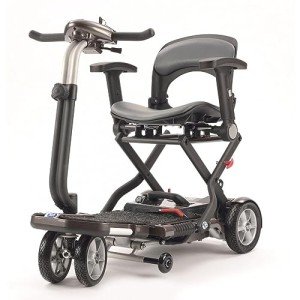10 Mobility Devices Tricks All Experts Recommend
Understanding Mobility Devices: Enhancing Independence and Quality of Life
In today's fast-paced world, the desire for mobility is universal. Nevertheless, specific medical conditions or age-related difficulties can prevent movement, leading to an ongoing look for assistance. Mobility devices function as important tools to enhance independence, improve quality of life, and enable individuals to engage fully in their communities. This short article supplies a comprehensive overview of mobility devices, including their types, functions, choice criteria, and more.
Types of Mobility Devices
Mobility devices vary from basic aids to complex equipment, tailored to fulfill different needs. Below is a table summarizing typical kinds of mobility devices:
Type of Device
Description
Ideal For
Walkers
Four-legged support devices that supply exceptional stability while strolling.
People needing extra support.
Canes
Single or three-legged sticks that enhance balance and support walking.
Those with minor mobility troubles.
Wheelchairs
Seats installed on wheels, readily available in manual and electric variations.
Individuals with restricted or no mobility.
Scooters
Electric lorries developed for outdoor use and ease of navigation.
Those who can't stroll cross countries.
Crutches
Devices that help people transfer weight far from an injured leg.
People recuperating from leg injuries.
Rollators
Walkers with wheels, seats, and brakes for improved mobility.
Users requiring rest alternatives while walking.
Raise Chairs
Reclining chairs that help users in standing up and taking a seat.
Seniors or those with mobility restraints.
Mobility Scooters
Small electric vehicles for minimal mobility, often used outdoors.
Individuals needing assistance over cross countries.
Key Features of Mobility Devices
When choosing a mobility gadget, several key features should be thought about to guarantee ideal functionality and ease of usage:
- Weight Capacity: Understanding the gadget's weight restriction is important for safety and effectiveness.
- Adjustability: Devices should be adjustable in height and width to fit the user easily.
- Mobility: Lightweight and foldable options are vital for users who travel or require transportation.
- Stability and Safety: Look for features like anti-tip wheels and sturdy structures to improve safety.
- Ease of Use: Simple systems and user-friendly designs can make a substantial distinction in daily use.
- Comfort: Ergonomic styles and padded seats can improve the user experience.
Selecting the Right Mobility Device
Selecting the right mobility device can be a daunting task. Here are some steps to guide the decision-making process:
- Assess Needs: Evaluate the individual's mobility obstacles and everyday activities.
- Seek advice from a Professional: Engage healthcare experts who can offer suggestions based on the person's physical condition.
- Trial Options: If possible, trial various devices to identify comfort and performance.
- Review Budget: Consider the cost of the device, including any additional functions or adjustments required.
- Research study Options: Determine the best brand names and models by checking out reviews and comparisons.
Table: Comparative Analysis of Popular Mobility Devices
Device
Advantages
Downsides
Walkers
Exceptional stability, promotes strolling.
Large, might limit motion in small spaces.
Walking canes
Lightweight, enhances balance.
May not supply enough assistance for extreme mobility issues.
Wheelchairs
Suitable for those with significant mobility constraints.
Can be cumbersome, particularly in indoor environments.
Scooters
Great for outdoor use, easy to maneuver.
Restricted indoor functionality, heavier.
Rollators
Offers rest option, simple to move.
May require more area than traditional walkers.
Lift Chairs
Comfy, helps shift from sitting to standing.
More expensive, bigger footprint.
Often Asked Questions (FAQs)
1. What is a mobility gadget?
A mobility device is any tool designed to assist individuals in moving and browsing their environment. This includes walkers, wheelchairs, scooters, and crutches.
2. How do I know which mobility gadget is best for me?
Consider your particular mobility challenges, physical capabilities, and way of life requirements. Consulting with health care professionals can also offer customized suggestions.
3. Are mobility devices covered by insurance?
Many insurance coverage plans, consisting of Medicare, might cover specific mobility devices. It's essential to consult your insurance coverage service provider for specific coverage information.
4. Can I rent a mobility device rather of purchasing one?
Yes, lots of medical supply shops and pharmacies use leasings for mobility devices. This option is useful for individuals with short-term mobility issues.
5. How can I keep my mobility gadget?
Regular upkeep is essential. It includes cleaning the device, examining for wear and tear, and ensuring all parts are working properly.
The Impact of Mobility Devices on Quality of Life
Mobility devices considerably enhance the lifestyle for individuals with limited mobility. They foster self-reliance, encourage social interaction, and boost access to vital services and recreational activities.
- Increased Independence: Users can browse their areas, go to occasions, and engage in pastimes without counting on others.
- Social Engagement: Mobility devices facilitate participation in celebrations, thereby combating feelings of seclusion.
- Boosted Safety: Devices provide stability and minimize the threat of falls, promoting user self-confidence.
Mobility devices are more than just tools for movement; they are entrances to self-reliance and quality living. By comprehending simply click the following article of mobility aids available, their key functions, and factors to consider for picking the right device, people can make informed choices about their mobility requires. Eventually, the ideal mobility gadget can lead to a more active, satisfying life. Whether it's a walker, wheelchair, or scooter, the ideal option contributes significantly to boosting the mobility and self-reliance of users.
